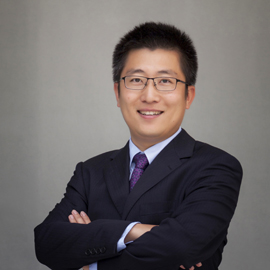
Free electron laser, Extreme ultraviolet laser, Ultrafast, Beamline
Excellent Ph.D. Degree Paper of CAS, 2011
Alexander von Humboldt Fellowship Germany, 2011
1. G.R. Wu, W.Q. Zhang, H.L. Pan, Q. Shuai, B. Jiang, D.X. Dai, X.M. Yang*, A new crossed molecular beam apparatus using time-sliced ion velocity imaging technique, Rev. Sci. Instrum. 79, 094104(2008). (The same contribution as the first author)
2. W.Q. Zhang, G.R. Wu, H.L. Pan, Q. Shuai, B. Jiang, D.X. Dai, X.M. Yang*, Product Vibrational State-to-State Correlation in the F + SiH4 ? HF(vHF) + SiH3 (0v20) Reaction: A Crossed Molecular Beam Ion-Imaging Study, J. Phys. Chem. A 113, 4652(2009).
3. W.Q. Zhang, H. Kawamata, A.J. Merer, K.P. Liu*, IR-UV Double-Resonance of Methyl Radicals and a Determination of the Detection Sensitivity of REMPI Bands, J. Phys. Chem. A 113, 13133 (2009).
4. W.Q. Zhang, H. Kawamata, K.P. Liu*, CH Stretching Excitation in the Early Barrier F + CHD3 Reaction Inhibits CH Bond Cleavage, Science 325, 303(2009).
5. G.R. Wu, W.Q. Zhang, H.L. Pan, Q. Shuai, J.Y. Yang, B. Jiang, D.X. Dai, X.M. Yang*, Crossed molecular beam ion-imaging study of the Cl + SiH4 ? HCl + SiH3 reaction: product vibrational state-to-state correlation, Phys. Chem. Chem. Phys. 12, 9469(2010). (The same contribution as the first author)
6. W.Q. Zhang, Y. Zhou, G.R. Wu, Y.P. Lu, H.L. Pan, B.N. Fu, Q. Shuai, L. Liu, S. Liu, L.L. Zhang, B. Jiang, D.X. Dai, S.Y. Lee, Z. Xie, B.J. Braams, J.M. Bowman, M.A. Collins, D.H. Zhang*, X.M.Yang*, Depression of reactivity by the collision energy in the single barrier H + CD4 ?HD + CD3 reaction, Proc. Natl. Acad. Sci. U. S. A. 107, 12782(2010).
7. J.M. Zhang, S.A. Lahankar, D.J. Garton, T.K. Minton*, W.Q. Zhang, X.M. Yang, Crossed-Beams Studies of the Dynamics of the H-Atom Abstraction Reaction, O(3P) + CH4 → OH + CH3, at Hyperthermal Collision Energies, J. Phys. Chem. A 115, 10894(2011).
8. H. Kawamata, W.Q. Zhang, K.P. Liu*, Imaging the effects of the antisymmetric stretch excitation of CH4 in the reaction with F atom, Faraday Discussions 157, 89(2012).
9. B. Zhao*, W.Q. Zhang, W. Schollkopf, Non-destructive quantum reflection of helium dimers and trimers from a plane ruled grating, Mole. Phys. 111, 1772(2013).
10. T. Zhang, H.X. Deng*, W.Q. Zhang, G.R. Wu, D.X. Dai, D. Wang, X.M. Yang, Z.T. Zhao, FEL Polarization Control Studies on Dalian Coherent Light Source,Chin. Phys. C 37, 118101(2013) .